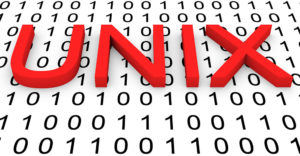Linux offers so much for users to sink their teeth into that even among desktop and more casual users, it’s easy to get caught up in the tradecraft. It’s only too tempting to put your system’s technical capabilities to the test by trying out a new program or practicing a new command. As with any other interest, though, Linux is not much fun unless you can revel in it with fellow fans and enjoy the camaraderie.
Here’s a short tour of some of the major cultural hallmarks of the vibrant Linux world, and some of the hubs where you can witness and indulge in the Linux life.
Distrowatch Is Your Distro Watchword
One pervasive trait among Linux users is curiosity, usually applied to trying out multiple Linux distributions. The most-frequented and central gathering place for doing just that is Distrowatch. While not a cultural movement per se, Distrowatch is a major driving force for a user base that concentrates and shifts over time. The site is where users go to keep tabs on the latest features of all the distributions, and to see which ones are gaining and declining in popularity.
It also provides a comprehensive database of distributions, their design principles, and their familial classification (i.e. which distributions are original projects and which are derived from others). If you haven’t found that perfect flavor of Linux, or are just hungry for a new one, Distrowatch offers the most trusted and time-honored means of finding it.
Free Software Makes Free Spirits
Because Linux rose at the inception — indeed, the forefront — of the “free software” movement in the 90s, the movement’s philosophy remains a central pillar of the culture around Linux as well.
Free software, or “free-libre software,” is the flip side of the same open source coin: If the latter characterizes the development model of publishing source code to facilitate communal contributions to the codebase, the former captures the ideological tenet of transparency afforded to users by the public availability of code.
It is because of this strong current of free software philosophy in Linux that Richard Stallman, free software’s most loyal champion, is more prevalent in Linux lore and popular culture even than Linus Torvalds, the Linux kernel’s creator himself.
Stallman is a frequent character in Linux memes, and the free software ideals he advances are a source of pride among a wide spectrum of Linux users. From the greenest neophytes to the most grizzled veterans, users appreciate the control Linux grants them over their digital life.
The non-hierarchical community focus at the heart of Linux has extended far beyond the development and into the social structures of the users themselves. One example of this is the predominantly Linux-focused podcast Hacker Public Radio. The series has no designated host, instead calling on listeners to submit episodes for the benefit of the rest of the audience.
In this way, community members don’t merely have control over the media program, they are the program. This is just one example, but it illustrates how the ideology behind free software — structuring the community to guide itself in a transparent and equitable manner — proliferated from purely a software development approach to a cultural artifact.
You May Say I’m a Themer…
For those who leverage the freedom of Linux for aesthetics, in particular, there is a vibrant community of themers splayed across the Internet for users who want to solicit, appropriate and share ideas.
There are dedicated clusters of theme artisans on sites like DeviantArt and DotShare who publish not only high-resolution screenshots of their latest desktop creations, but also links to their GitHub pages so others can download a copy of the configuration files that produced them.
In the case of DotShare, the site is specifically tailored to posting configuration files right alongside the images, with all the necessary files for a given look curated in one place.
The comment sections of these and other Linux theme meccas can be found brimming with words of encouragement and requests for artists to share their techniques, and most will oblige when they can. Few spheres of Linux culture generate as much excitement, or engender as much cooperation, as the theme community, with its charms equally appreciated by themers and pure admirers alike.
LUGs Give You a Reason to Lug Your Computer Around
The bulk of Linux culture, like most of culture in general, thrives online — but there is a robust community that meets in physical space as well.
Long before the Internet became an indispensable tool for modern life, Linux User Groups (commonly known as “LUGs”) across the U.S. and around the globe hosted monthly meetings to bring together experts and newcomers, developers and users, and anyone else curious about free software.
To this day, LUGs still assemble to hold all kinds of events, whether technical ones like digital privacy workshops or social ones like casual hangouts or even movie nights. While all kinds of Linux forums abound, LUGs remain a place for new users to embrace the camaraderie of the Linux community and extend it to others in turn.
Just as there is a distribution for practically every Linux user, there’s a corner of the community or a slice of the culture for everyone, too. If you’ve ever wondered where Linux fans hang out, and what they get up to when they do, the answer is only a click (or in-person visit) away. No matter what your experience with Linux, you haven’t seen the whole picture until you’ve tasted the culture that keeps it buzzing.
























































Unfortunately Linux is a tech OS not a mainstream OS. It is a great server OS for sure. Does it belong on the average user’s desktop? Not at all.
GNU/Linux is a great option for working and having fun. It works. It s easier now that it was years ago… maybe easier and surely safer and faster than the other OSs. It is nice too (eye-candy).
I came and stayed 😉